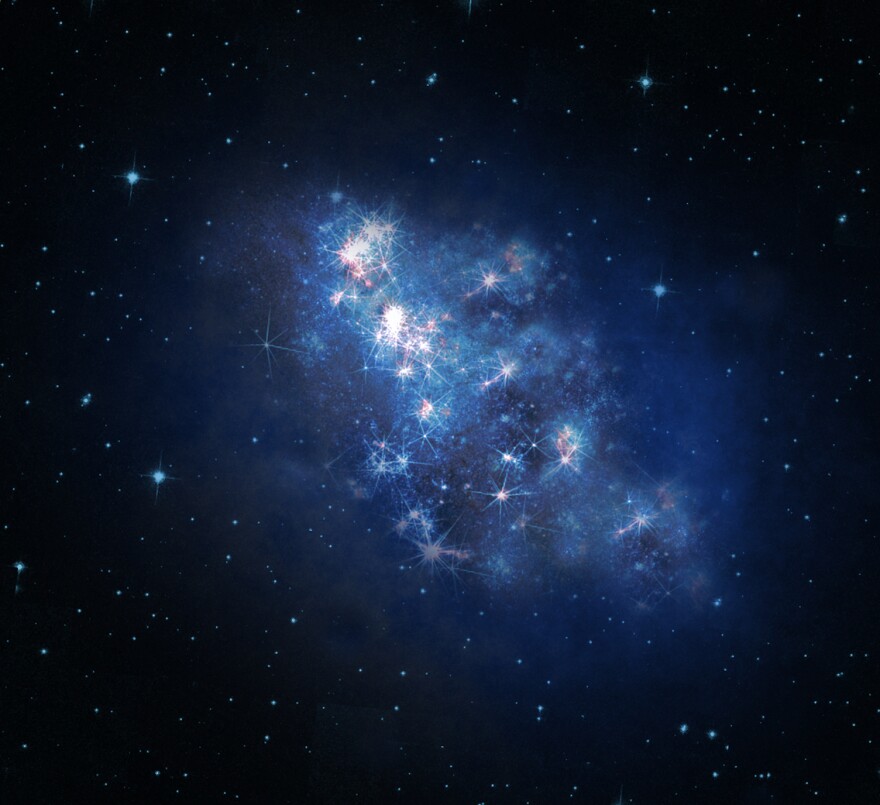A team led by a UT Austin astronomer has identified and measured the distance to the most distant galaxy found so far.
The galaxy — designated z8_GND_5296 — is so far away from Earth that the light we are now able to see from it was emitted more than 13 billion years ago. So we're seeing it as it was in the distant past.
"We're seeing it very close to the Big Bang. About 700 million years after the Big Bang," says UT astronomer Steve Finkelstein, who led the project. He says ultimately, far, far away galaxies like this one may help us understand things closer to home. “We want to study very distant galaxies to learn how galaxies change with time, which helps us understand how the Milky Way came to be.”

Now, identifying and measuring such distant galaxies is tricky. When you're dealing with distances in the billions of light years, sometimes galaxies that are much closer may look far away.
To identify this galaxy, the team began with a handful of images from the Hubble Space Telescope. They looked for galaxies that might be really far away, based on their color.
Then they had to measure the actual distance to these objects, using a process called spectroscopy.
"That's where you take the light from a source and split it up into its component colors," says Finkelstein. "A lot of people are familiar with a prism. You can pass sunlight through a prism and you can see it split up into a rainbow." The team does something similar, using some equipment more advanced than a prism.
Here's where it gets complicated.
Because the universe is expanding, everything is moving away from everything else. The farther something is from you, the faster it's moving away. Now, when something is moving away from you, the light from that object gets stretched — and becomes more red. It's a phenomenon called "redshift". The further away — and faster — an object is moving, the redder they look. This galaxy — z8_GND_5296 — is extremely red. In fact, it's so red that it's beyond the spectrum of light visible to humans.
"It's literally invisible," says Finkelstein. "If you had 100-meter pupils in your eyes and could see deep into the distant galaxy, you would not see this galaxy. Because all that visible light has shifted into the infrared."
The team used the Keck I telescope in Hawaii, one of the largest optical/infrared telescopes in the world, to measure the galaxy's redshift at 7.51 — the highest ever found.
Beyond being really far away, z8_GND_5296 is also unusual for another reason: It makes stars really, really fast. Galaxies, on average, produce about 10 stars per year. But this galaxy makes 300 per year. The previous record-holder for the farther galaxy had a star-formation rate of 100 per year. These two faraway galaxies happen to be in the same neighborhood.
Now, Finkelstein says, the next thing is to find out why these two "weirdo" galaxies behave the way they do.





